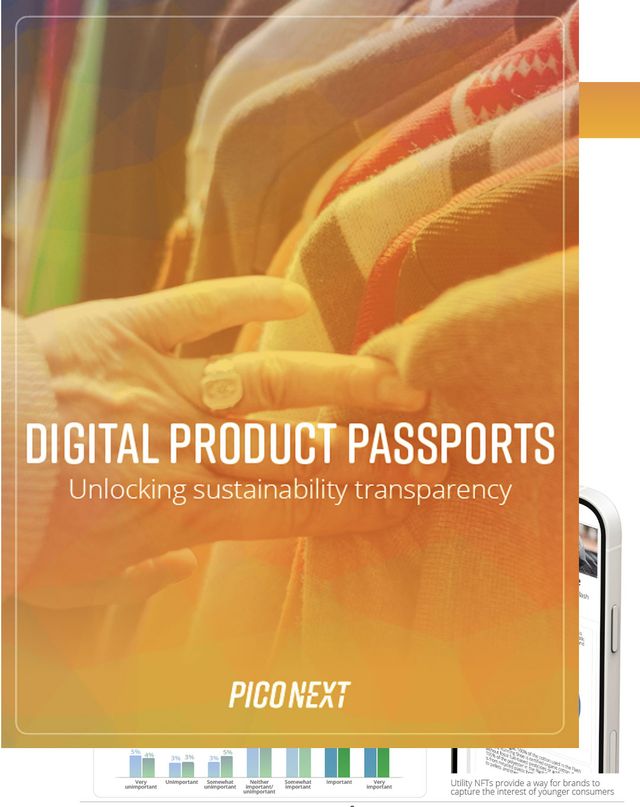Today, we’re excited to announce a new Sustainability Transparency solution from PicoNext to help brands substantiate their sustainability marketing claims and avoid “greenwashing” – the misappropriation of environmentally focused marketing programmes for a company’s own benefit. The new solution helps companies record the specific actions they’re taking with their sustainability initiatives on a public ledger, show their progress towards environmental goals, and increase trust and transparency with their customers.
Sustainability marketing is becoming more and more crucial for brands, and not just because it's the right thing to do. It actually helps them establish genuine connections with Gen Z audiences who place a high value on environmental initiatives. But here's the catch: as companies dive into sustainability, they need to back up their "green" marketing claims – otherwise loosely made promises can cause reputation damage and potential legal issues. It’s essential that brands “walk the talk” with regard to their sustainability claims.
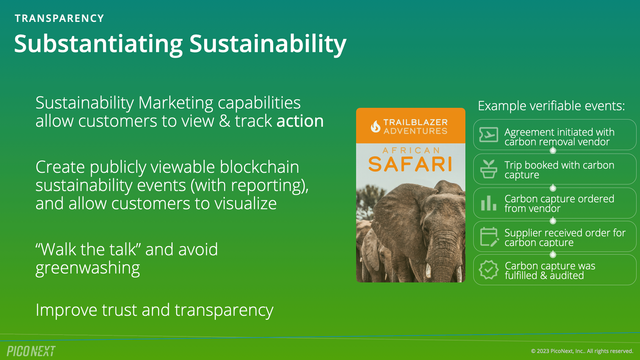
Connecting with Gen Z through “green” marketing
As companies engage in sustainability programmes, sometimes they encounter difficulty in communicating to their constituencies. For example, 88 percent of younger Gen Z consumers simply don’t trust companies’ environmental claims1. Customers want to see tangible evidence that green initiatives actually drive change. As a result, they demand transparency from the companies they engage with. For example, consumers filed a class action lawsuit against Delta Airlines in May 2023, alleging that the carbon credit claims the company offered didn’t achieve their intended purpose2.
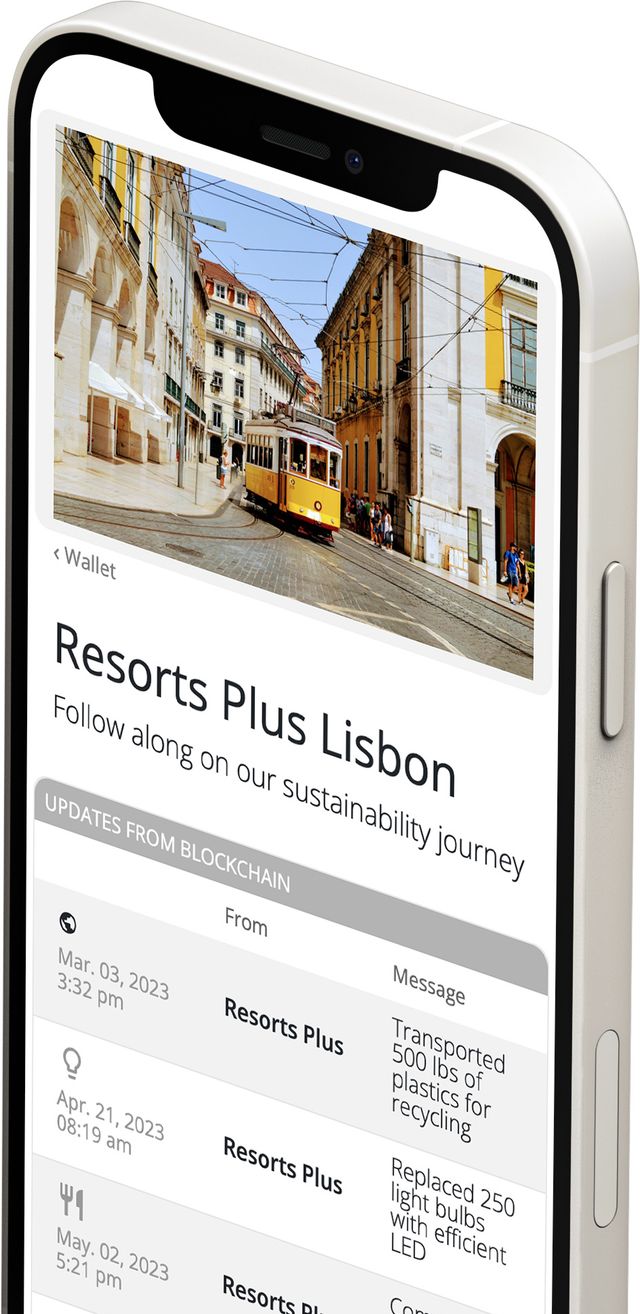
Challenges in communicating sustainability
Many companies have used periodic “sustainability reports” as a way to articulate their efforts to stakeholders and communicate the initiatives they’re involved in. However, these reports are often buried deep within a company’s website, and consumers do not take the time to read the important information contained within them. At other times, the information is not presented in an easy-to-consume, visual format for consumers using mobile devices.
Driving trust and transparency with public ledgers
The new Sustainability Transparency capabilities in PicoNext allow organisations to record their sustainability actions on public blockchain ledgers, in a no-code environment. These public ledgers enable stakeholders to verify the actions a company is undertaking, and facilitate the coordination of complex, multi-step sustainability actions among diverse groups. Using a public ledger, end-consumers can view the specific actions a company is taking towards its goals and can verify the progress the organisation is making.
For example, many forward-thinking hotels offer a “net zero” guest experience related to carbon emissions. To demonstrate to guests that the property is delivering on its promises, one of these resorts – together with its sustainability vendors – can push events to a public ledger that represent the specific actions they’re taking regarding carbon capture, such as:
- Order for carbon removal placed with carbon removal vendor
- Order received by carbon removal vendor
- Order scheduled for fulfilment
- Order fulfilled and confirmed
- Carbon removal audited by third-party
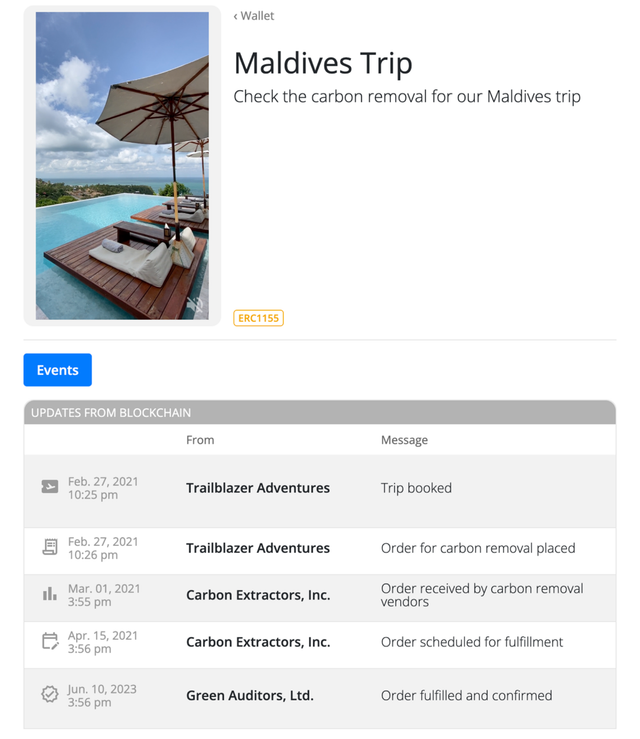
Visualising sustainability actions
Using the Token Explorer capability of PicoNext, guests can visualise these events and actions on a publicly shared ledger – gaining confidence that the actions are indeed being undertaken, and seeing the results and impact of those activities.
Companies can also engage customers in an end-to-end environmental story by recording and visualising actions in other sustainability areas such as reducing water consumption, improving energy efficiency, minimising food waste, and sourcing sustainable ingredients.
Demonstrating step-by-step progress enhances the ability of companies to substantiate their marketing claims – particularly with complex supply chains like those involved in climate mitigation or sustainable product sourcing.
Sustainability of public ledgers
Public ledgers have modernised their own sustainability in recent years, with new technology changes in how they confirm transactions resolving concerns about resource usage and electricity consumption. The result of the new consensus mechanism by which these networks use to confirm their transactions (called proof-of-stake) is a reduction in annualised electricity consumption by more than 99.988% by the blockchain network, and a reduction of its carbon footprint by approximately 99.992%, according to Ethereum.org3.
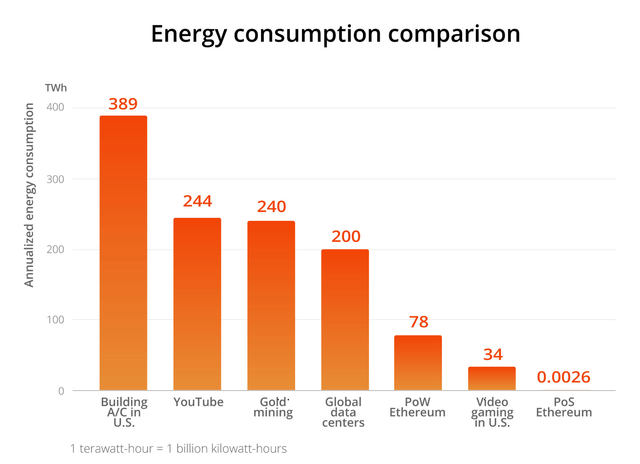
Moving sustainability forward
PicoNext Sustainability Transparency capabilities include Token Events, which allows companies to record their sustainability actions on a public ledger, and Token Explorer, which enables consumers to easily view and visualise those environmental actions without the need to download or install a digital wallet. These PicoNext capabilities can enhance existing customer outreach and corporate social responsibility strategies as a way to better connect with and engage the communities that brands serve.

See the possibilities for Sustainability Transparency
We’re looking forward to seeing how companies use this new Sustainability Transparency solution as part of their corporate social responsibility initiatives, and to drive increased trust and transparency in sustainability initiatives strategies. For more details and to see the solution in action, see a demo of PicoNext.
See a demo of Sustainability Transparency capabilities
Footnotes
-
www.mckinsey.com/~/media/mckinsey/email/genz/2022/12/06/2022-12-06b.html ↩
-
apnews.com/article/delta-airlines-lawsuit-carbon-credits-carbon-neutral-469f2671010ba7f40c934cc23d62149a ↩
-
ethereum.org/en/energy-consumption/ ↩

